
"Iranian Cure for the Delta’s Blues," by Joel K. Bourne Jr., on 16 August 2010 -- Baptist Town, with its tumbledown clapboard shacks on the wrong side of the tracks in Greenwood, Miss., seems an unlikely spot for any kind of revolution, especially one inspired by the Islamic Republic of Iran. But soon, that Mississippi neighborhood and others like it in the Deep South may see some startling changes.

While political leaders in the United States and Iran are practicing boisterous brinkmanship over nuclear proliferation, a small group of health care professionals from both countries are quietly working together to practice a new type of medicine, beginning in Mississippi, a state that has been mired at the bottom of nearly every health index for decades. Their primary focus is the storied Mississippi Delta. The flat, hot, rural landscape that gave birth to the blues— the quintessential American art form that put suffering to song—now suffers a host of health woes, with some of the highest rates of diabetes, obesity, hypertension and infant mortality in the nation.

Despite hundreds of millions of dollars spent over the last decade to improve residents’ health there, the disparities between the Delta and the rest of the state have only widened. “I’ve been in and out of the Delta for 40 years and nothing much has changed,” says Aaron Shirley, a 77-year-old pediatrician who pioneered public health care in the Delta. “I was wringing my hands and crying about it one day when he said, ‘Why don’t you come to my country and learn how to do it?’ And so I did.”
“He” is Mohammad Shahbazi, M.D., chair of the Department of Behavioral and Environmental Health at Jackson State University, who was born in southern Iran. Despite its reputation in America as an international pariah with an infamous human rights record— part of former President George W. Bush’s “axis of evil”— Iran has won kudos from the World Health Organization for its innovative primary health care system. That system has eliminated health disparities between rural and urban populations over the last 30 years, reducing infant mortality in rural areas by tenfold.

Illinois Central Depot, Belzoni, Miss.
Last year, as the United States was gearing up for its political slugfest over health care reform, Shahbazi— with the tacit approval of the National Institutes of Health and Iran’s ministry of health —organized a tour of the Iranian health system for Shirley and James Miller, a health care consultant from Oxford, Miss. They met with the doctors and public health officials who built the Iranian system, visited rural “health houses” and hospitals, and returned home convinced that the Iranian model could be just the cure for what ails the perpetually ailing Delta, and perhaps even the nation. “The health house system in Iran is like the German VW Beetle,” says Miller, of the Oxford International Development Group. “It’s simple and it works. It was developed by a country that wasn’t too popular at the time, but it solved a basic transportation problem.”
Yes, he says, Iran is a rogue nation. But “if the Iranians came up with a cure for cancer, would we not use it just because we dislike their leaders? This has nothing to do with politics,” Miller says.

In Iran’s health care system, remote village health houses are the first line of defense, staffed by villagers known as behvarzes. The behvarzes are trained to provide basic health services for villages of up to 1,500 people. Male behvarzes take care of sanitation, water testing and environmental projects. The women concentrate on child and maternal health, family planning, vaccinations and tracking each family’s births, deaths and medical histories. Iran, a country roughly twice the size of Texas, now has more than 17,000 health houses and more than 30,000 behvarzes who cover more than 90 percent of the rural population—about a quarter of the country’s 72 million people. Recently Iran began creating health posts in city neighborhoods to perform the same functions for its growing urban population.
But it’s not the health house alone that makes the system work; it’s integration with more advanced care. The health house is the first stop, says Shahbazi. It is supervised by doctors at a regional health center, which takes the cases the health house can’t handle. Together, the health houses and regional centers handle about 80 percent of all cases. Larger hospitals care for the patients who need treatment the regional centers can’t provide. Iranians can go to whatever health facility they choose— but if patients are referred through the health house their costs are less.
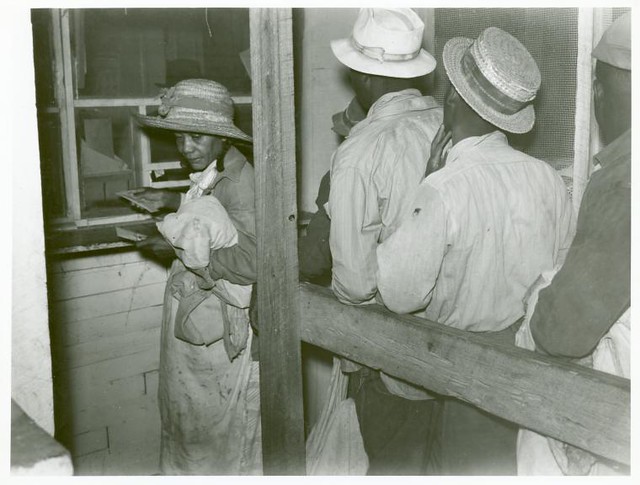
Negro day laborers brought in by truck from nearby towns, waiting to be paid off for cotton picking and buy supplies inside the plantation store, Friday night, Marcella Plantation, Mileston, Mississippi Delta, November 1939.
“I think they’ll have to tailor it to the culture here,” says Zahra Sarraf, M.D., from Shiraz University in Iran, who recently visited a clinic in Belzoni, Miss., to talk to residents and local medical staff about the health house concept. “It’s very different from Iran.” But in both cases the aim is “to make the health houses teach preventive care. So people who have diseases but don’t know it can be made aware of it.”
Shirley hopes to transform a donated Baptist Town shack into a clean, well-lighted place—a welcoming, primary care clinic where screenings and immunizations will be free and local families will feel at ease being treated by people from their neighborhood.
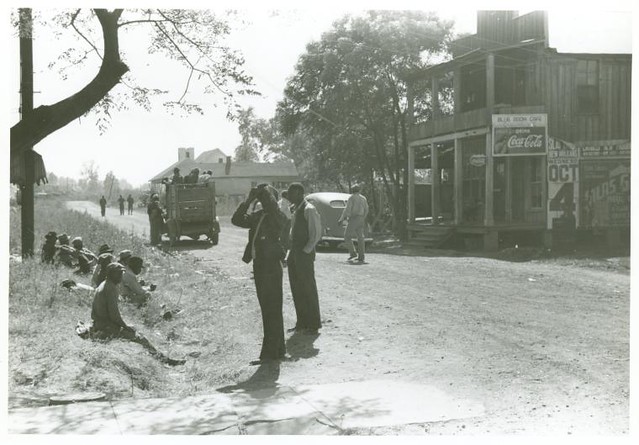
Negro section of town, Saturday afternoon, Belzoni, Mississippi, November 1939
Iran’s health house system was established with the full support of the Iranian government, which provides inexpensive health insurance for all its citizens. But in places like Baptist Town, health insurance is a luxury most people simply can’t afford. According to longtime resident Sylvester Hoover, who owns and runs the only business in Baptist Town— a convenience store and laundromat— little has changed in the former sharecropper community since blues legend Robert Johnson sat on a street corner in the 1930s singing “Hell Hound on My Trail.”
“I don’t have insurance,” says Hoover, who has offered the shack he owns next to his store as the site for the future health house. “I need to see a doctor about my foot. Can’t hardly walk. They say I need surgery, but I can’t afford it. Everybody here got dental problems ’cause no one teaches them how to take care of their teeth. A lot of people over here really need to see the doctor and just can’t afford to.”
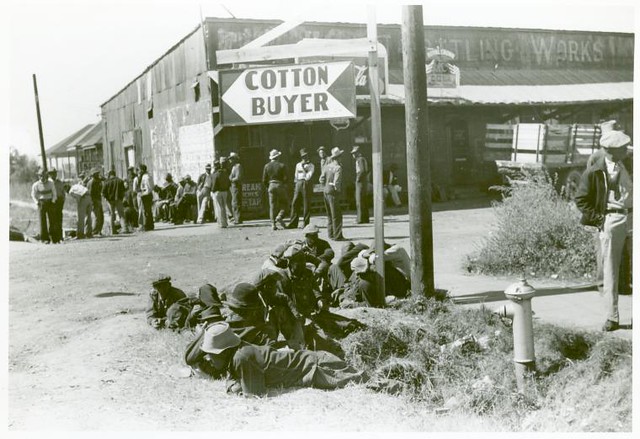
Negro section of town, Saturday afternoon, Belzoni, Mississippi, November 1939
“I got it all,” says Charles Griffis, 73, sitting on his porch across from Hoover’s store. “High blood pressure, diabetes, and I’m a prostate cancer survivor.” Griffis says he’s been putting off a visit to the rural health clinic in Mound Bayou—a 100-mile round trip. “That type of service is needed really bad. I think people would accept something like that.”
Unlike the Iranians, Shirley, Shahbazi and Miller are trying to establish the Mississippi health houses on a song and a prayer, using volunteers along with donated buildings and medical supplies. The plan is to eventually train single mothers currently on welfare to staff the health houses in their communities, giving them skills they can use to get off government assistance.
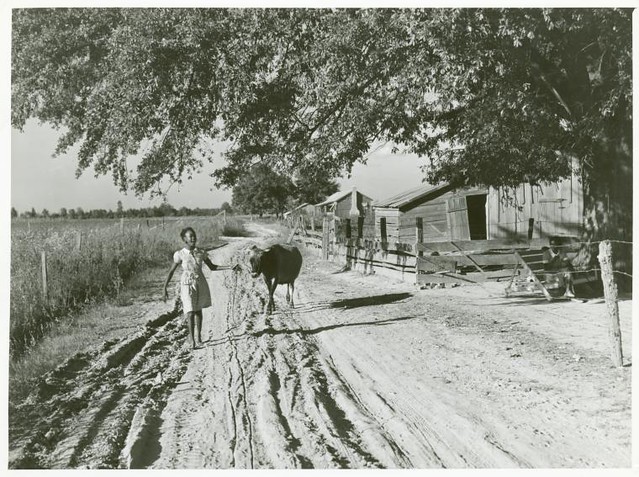
So far, support for the project has come from the Jackson Medical Mall Foundation, which supports Shirley’s large community clinic in Jackson. Shirley’s group is applying for a $20 million grant from the U.S. Department of Health and Human Services to fund 10 health house pilot programs in Mississippi, Arkansas and Louisiana. And though it sounds expensive, Miller is convinced it will actually save money in the long run. “This is one of the things that can address the cost of health care,” says Miller. “Preventive care keeps people from getting sick in the first place, and [postoperative care] will save billions in readmissions. This really could be an answer for what ails the U.S. health care system. But forget the dollars, what about the human suffering? The value of taking a healthy, productive human being out of society? We’ve got to change the way we think. If you look at the health disparities for minorities in the U.S., we look like some undeveloped countries in how we treat our citizens.”
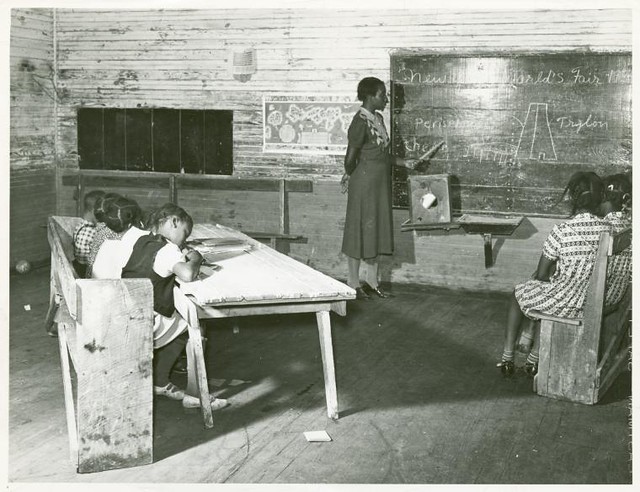
And in fact, a number of countries have flourishing primary health care systems. Brazil, Chile, Costa Rica and Cuba all have such care systems, as do Spain and Portugal. Canada and the United Kingdom also have systems that cost less and provide better health outcomes than the current system in the United States.
“Primary care makes a lot of sense,” says Hernan Montenegro, M.D., of the World Health Organization. “It’s not just for poor countries. If you cover everybody and everybody has some access to health care, they get less sick and are more productive. Kids who aren’t sick do better in school and become more productive adults. Investing in health has numerous benefits.”
But it’s the people-to-people aspect that inspires LaTania Sci, M.D., an internist from Dayton, Ohio, and the fact that she sees more and more Americans falling through the cracks of the current health care system. Sci is one of half a dozen health care professionals who have volunteered to travel to Iran this summer for a six-week crash course at Shiraz University, so she can set up a training center for community health workers in Mississippi.
“I really admire the people who developed this concept,” says Sci. “They just happen to be Iranian.
But on a person-to-person basis so much can occur. I think it’s a brilliant model, and I think it will catch on throughout the U.S.” (source: PAYAM)

Hello. At the moment I live in Kentucky and of course the story of the coronavirus causes me a lot of stress. But I found a great solution in the form of full spectrum cbd gummies . Just one serving of cbd gummies a day and I have a boost of vitality, good mood, restful sleep and good spirits. These gummies do wonders for my nervous system.
ReplyDeleteI heard that cbd helps get rid of joint pain, is this true?
ReplyDeleteGood afternoon. I have suffered from chronic back pain for over 10 years and nothing seemed to help. One day, while browsing ads on Facebook, I saw an ad for CBD Products. It caught my attention because it promised help with pain and other health issues such as anxiety, stress and insomnia. I decided to try their website, because there's nothing wrong with trying something new, right?
ReplyDelete